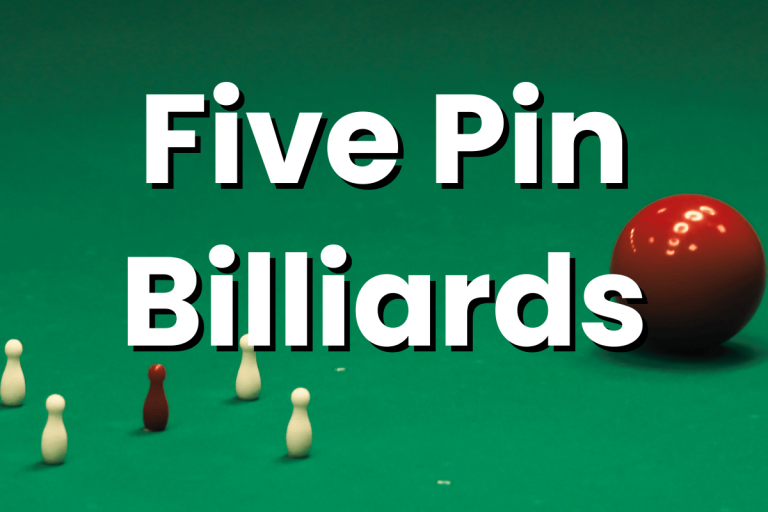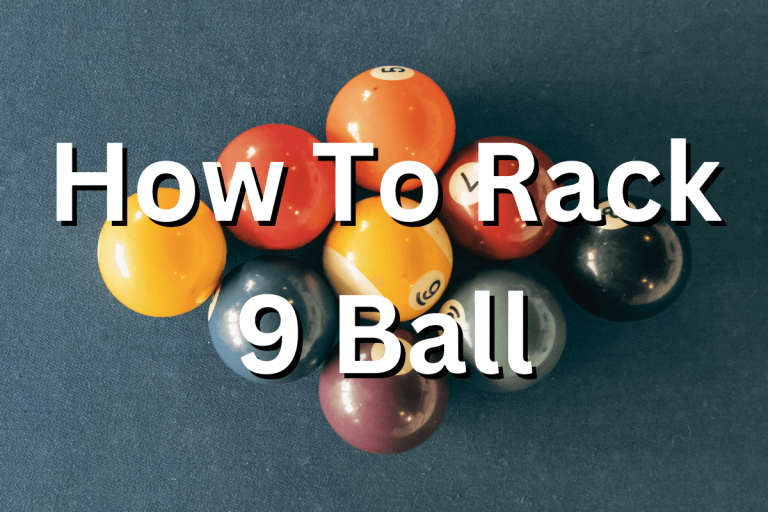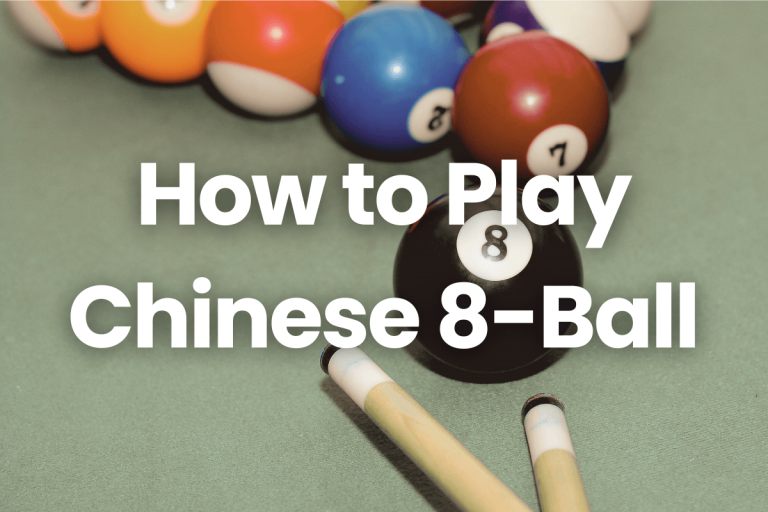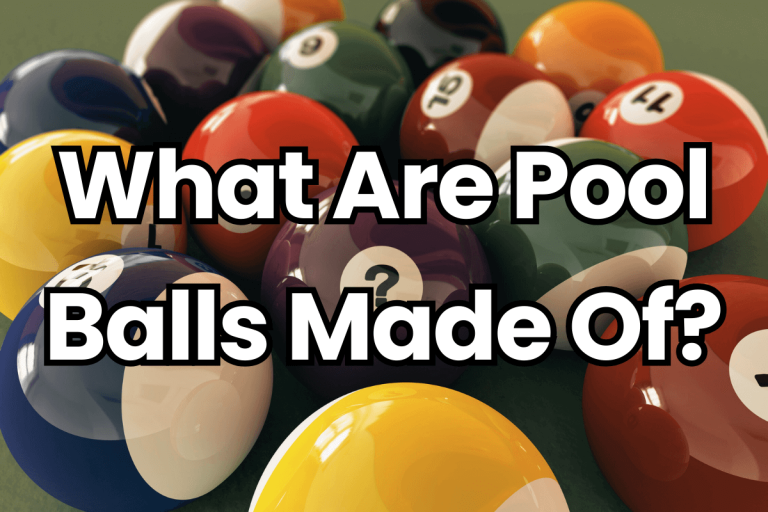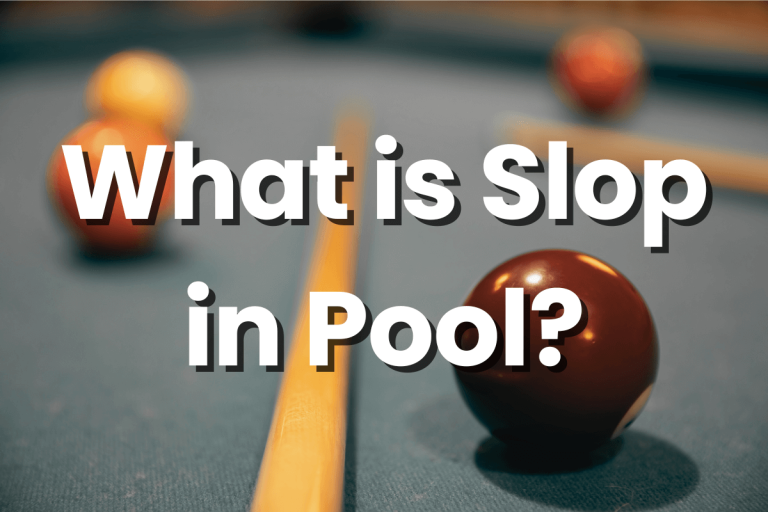Masse Shot in Pool | A Step-by-Step Guide (2024)
The masse shot in pool is a fascinating and complex maneuver, known for its dramatic curve and spin effects on the cue ball. It stands out for its ability to navigate around obstacles, making it a game-changer in tight situations. This shot is not only a display of skill but also a strategic tool, captivating players and spectators alike. Despite its challenging nature, mastering the masse shot adds a significant edge to a player’s repertoire, elevating their game to new heights.
What is a Masse Shot in Pool?
Definition and Basic Concept
A masse shot in pool is an advanced cueing technique where the cue is struck sharply and with extreme spin. The aim is to make the cue ball curve dramatically in its path, often to avoid obstacles like other balls. This is achieved by striking the ball off-center with a significant amount of force and spin.
Historical Context and Evolution in Cue Sports
The origins of the masse shot in pool are intertwined with the evolution of cue sports. Initially seen in games like carom billiards, the technique has been refined over centuries. The shot gained popularity as players explored more intricate and skillful ways to maneuver the balls, especially in situations where a direct shot was not possible. Its development reflects the increasing sophistication and skill in cue sports.
Key Components of a Masse Shot
- Cue Angle and Position: The cue is typically held at a steep angle, often between 45 to 75 degrees to the table.
- Point of Contact: The cue ball is struck off-center, usually below the equator, and sometimes to the side, depending on the desired curve.
- Force and Spin: The shot requires a precise balance of force and spin. Too much force without control can lead to a foul or an unintended outcome.
- Cue Ball Control: Mastery over the cue ball’s behavior post-impact is crucial, as the spin can dramatically alter its path and speed.
The Physics Behind the Masse Shot in Pool
Explanation of the Physics Involved
The masse shot in pool is a brilliant demonstration of the principles of physics, particularly Newton’s laws of motion and the concepts of angular momentum and friction. When the cue strikes the ball off-center with a steep angle, it imparts a combination of linear and rotational motion. This creates a force that causes the ball to travel in a curved path.
Impact of Spin and Angle on Trajectory
- Spin: The spin is critical in a masse shot. When the cue ball is hit, the friction between the ball and the cloth causes it to spin rapidly. This spin, combined with the forward motion, makes the ball curve. The direction and degree of the curve depend on the direction of the spin.
- Angle: The angle of the cue also plays a vital role. A steeper angle generally results in a more pronounced curve. The force applied at these angles creates a torque that influences the ball’s trajectory.
- Speed: The speed at which the cue ball is struck affects how quickly it curves. A faster strike results in a quicker and sharper curve.
Visual Diagrams
- Imagine a series of diagrams illustrating these concepts:
- A diagram showing the cue striking the ball at different angles and the resulting spin direction.
- A trajectory diagram showing how different spin directions affect the path of the cue ball.
- A sequence diagram shows the cue ball’s progression from the point of impact to its curving path around an obstacle ball.
Required Equipment and Setup for a Masse Shot in Pool
Ideal Cue and Tip
Cue: For executing a masse shot, a cue with a stiff shaft is preferred as it offers better control and stability. The weight of the cue should also be comfortable for the player, providing enough heft without being overly heavy.
Tip: A hard tip is crucial for a successful masse shot. It needs to be capable of imparting a significant amount of spin without deforming under the pressure of a forceful, angled strike. The tip should be well-maintained and properly chalked to ensure maximum friction and control.
Other Essential Equipment
Chalk: High-quality chalk is important to increase the friction between the cue tip and the ball, crucial for creating the necessary spin.
Gloves or Hand Powder: These can help reduce friction between the cue and the bridge hand, allowing for smoother cue action.
Table Conditions Affecting the Masse Shot
Cloth Type: The smoother the cloth, the easier it is for the ball to spin and curve. A newer, less worn cloth is generally more conducive to successful masse shots.
Level of the Table: An uneven table can unpredictably affect the ball’s trajectory. A level playing surface is essential for the precision required in a masse shot.
Setting Up for the Shot
Positioning: The player’s stance should be stable yet flexible, allowing for a full range of motion in the upper body and arms. The grip on the cue should be firm but not tense.
Cue Ball Placement: The position of the cue ball is critical. It needs to be placed in a spot where the intended path is clear of obstructions, and there is enough space for the curve to develop.
Aiming: Aiming for a masse shot involves visualizing both the initial path of the cue ball and its curved trajectory. This requires practice and a good understanding of angles and spin dynamics.
Step-by-Step Guide to Executing a Masse Shot
Stance
- Foot Position: Place your feet shoulder-width apart for stability. The foot closest to the table should be slightly forward.
- Body Alignment: Lean slightly over the table to achieve the necessary angle for the cue, while maintaining balance.
- Arm Position: Keep your bridge arm straight and firm on the table for support.
Cue Positioning
- Cue Angle: Hold the cue at a steep angle, typically between 45 to 75 degrees relative to the table.
- Grip: Your grip on the butt of the cue should be firm to control the shot but relaxed enough to allow wrist movement.
Executing the Stroke
- Aiming: Focus on the spot where you intend to strike the cue ball. This is usually below its equator to impart the necessary spin.
- Striking: With a swift, downward stroke, strike the cue ball. The action should be smooth and controlled.
- Accelerate: As you strike, accelerate the cue through the ball to ensure enough force is imparted.
Wrist Movement and Follow-Through
- Wrist Snap: A slight snap of the wrist at the point of impact can add extra spin to the ball.
- Follow-Through: Continue the cue’s motion even after striking the ball. This ensures that the full force and spin are transferred.
Common Mistakes and Avoidance Tips
- Overhitting: Avoid using excessive force which can lead to loss of control. Practice controlling the strength of your stroke.
- Poor Cue Ball Contact: Mis-hitting the cue ball can lead to miscues or unintended trajectories. Consistent practice will improve accuracy.
- Losing Balance: Maintain a stable and balanced stance throughout the shot. Avoid leaning too far over the table.
- Neglecting Follow-Through: A complete follow-through is crucial for imparting the correct amount of spin and direction to the cue ball.
Conclusion
The masse shot in pool hinges on understanding its physics, choosing the right equipment, and perfecting your stance, cue positioning, and stroke. Remember, wrist movement and follow-through are crucial. While it’s a challenging shot, regular practice and experimentation are key to success. Embrace the art and precision of the masse shot as part of your skillset, and with time and dedication, it can become a spectacular and rewarding part of your pool-playing repertoire.
FAQs
Is the masse shot legal in all pool games?
The legality of the masse shot varies depending on the specific pool game and its official rule set. While generally allowed in most professional and casual settings, it’s always recommended to check the specific game rules or consult with a referee if unsure to avoid any potential fouls.
Can a masse shot damage the pool table?
If executed improperly, a masse shot can damage the table’s cloth due to the extreme spin and force. It’s important to practice carefully and possibly consult with the venue if playing on a public table.
What type of cue is best for executing a masse shot?
A cue with a stiff shaft and a hard tip is typically best for masse shots. It should be comfortable in weight and offer good control and stability.
How can I improve my masse shot?
Practice is crucial for improving your masse shot. Focus on your stance, cue positioning, and striking technique. Start with less extreme angles and gradually increase as you gain control and confidence.
Are there any common mistakes to avoid while performing a masse shot?
Common mistakes include using too much force, not maintaining a stable stance, incorrect cue ball contact, and neglecting the follow-through. Avoid these by practicing regularly and paying attention to your technique.
How does the angle of the cue affect the masse shot?
The angle at which you hold the cue is critical in a masse shot. A steeper angle typically results in a more pronounced curve of the cue ball. However, it also requires more skill and control to execute correctly without miscuing.
Is it possible to perform a masse shot in both directions, left and right?
Yes, a masse shot can be executed in both left and right directions. The direction of the curve depends on the side to which you apply the spin. This requires adjusting the point of contact and the spin direction on the cue ball accordingly.


